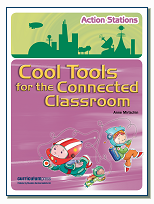A special Australia series was scheduled this week by Carole McCulloch as Nigel Paine was in Australia, visiting from London and en route to the USA> Nigel Paine was an entertaining but fluent and knowledgeable presenter who was thought provoking and inspiring. His sense of humour and ‘chatty’ nature who kept us all engaged and encouraged all participants to interact. Link to the session’s recording
“The world is changing and we need to move with it”
The culture of organisation is represented by how employee’s feel about work, number of customers etc.Innovation is breaking new boundaries and change the way that people perceive schools or organisations. Druckers definition of innovation: “Change which creates a new dimension of performance.” (improves, moves on, changes in a step way, help young ones change their lives) makes things more useabale. Something that makes ‘step difference’ from where we are. If making step change you have to be able to measure it. Measurement can be approximate. Innovation can break new boundaries, change the way that people perceive the organisation and allows information to flow faster, knowledge to be shared etc
Technology gives learning a chance to reinvent itself, gives people excitement, gives them a challenge. Information technology as an enabler often does very little.
What are the blockers to innovation? Here are the participants’ responses.
Some of Nigel’s responses to the above list include:-
- Money is always an excuse. Often when money is tight, that is the time to innovate.
- No-one is challenging anyone to do very much.
- We could do it better but it can be depressing!
- What holds back the pace of innovation?
- IT goes from being servant to master – not secure, too expensive, not on priority list. IT is to be an enabler.
We can see whether there is step measurement:
- May see dollar measurement
- Change in culture: how do people feel about work, number of customers, of people who choose to stay rather than leave, number of new customers etc
- Measuring does not need a decimal formula
- innovation is more about the new dimension – do we perform differently because of the change
An innovative bookshop in Brazil, has this motto: If something works, then it is already obsolete. The incessant quest is to create the new and that concerns us all.
Here are 4 of the 5 big shifts in learning
- Learning : embedded in work and embedded in the work place and aims to make a step change. – all about alignment, not possible now to simply go on your own merry way. Alignment with organisation’s objectives. Learning strategy must be in alignment with organisations’ objectives.
- Social in nature – learning is based on team work, social networking and web2.0 encourage team sharing, team learning and team performance. You don’t have to fix it on your own, solve problems together, share knowledge together.
- Portable in format – any time any place, and increasingly multiple platform.
- Agile in deployment – we need it in 3 weeks, what can we get in 3 weeks. How fast is fast? Throw stuff at people and let them make use of it. Let people work in teams and work out what they can do with it.
Great people, great environment, great performance – ability to have some control, feel like you belong, so collective environment, difference amongst different teams.
From the vibrant and energetic chat came the following:-
- Discussion on the value of iPod touch applications.
- The potential role in education of iPads as portable learning devices
- How to bring staff on board to embrace the new technologies
- Fun conversation around the lamps that Nigel showed us
- innovation = change which creates a new dimension of performance
- innovation is more about the new dimension – do we perform differently because of the changes
- The benefits (or step changes) could be $$, retention of employees, increased efficiency?, something novel that moves us markedly forward?
- The Danes also have a quote re great design…don’t make something unless it’s both necessary and useful; but if it’s both necessary and useful, don’t hesitate to make it beautiful
- How does one encourage staff to take on board new technology and start using it effectively?
- we need to replace the fear with incentives
- What if we support just enough of change for the person/group to get a taste — a taste of the better — this draws people in and is better than an “incentive”
- there’s that embedding word again – becomes mainstream – and thenof course its no longer innovative – its a constantly shifting sand
- i don’t think innovation can occur for extrinsic reasons
- Nigel, we’re getting a few ideas about ‘enablers’ as opposed to ‘blockers’ – always important to have both sides
- My observation is that money as the primary incentive usually results in “lip service” change
- like the appreciative inquiry approach-where you deliberately avoid the issue of ‘barriers’and focus on the question;’what do we want more of-where you identify what is working well
- Moodle has been modified from direct input from teachers
- portable devices – kindle, ipads – how do they change your practices?
- Mobile devices improve access and allow for better personalisation of learning. More cost effective too.
- the issues or barriers to innovation are not to do with hardware – more to do with headware
- Once students are given iPads, I am sure they would find all sorts of means of using them to empower their learning
- Thinking netbook is a better educational tool than an iPad in today’s classroom.
- I think mobile devices might circumvent some of the tech fear colleagues have because they can immediately interact without a special skill set.
- We had an excellent discussion the other day about moving away from education talk that focusses mainly on devices-and we need to talk more about digital skills, digital capabilities etc
- learning outcomes first, tools second
- so maybe we’re discovering theimportance of ‘storage’ capacity for learning as well as ‘portability’
- digital skills, digital capabilities are approached differently depending on the device whether it be a computing lab workstation or a portable device in a classroom
- instructional design has changed over the last few years because of innovative methods, devices and abiilty to use them – the skill lies in the way in which the ID diffuses and shares
- Here’s a teacher who has used iPod touches in his English classroom (class set) and now has others using them also.
- Smartphones will be the leveler — see the work being done with mLearning
- true, the process rules – this is where the innovation will happen
Thanks for giving up your time from your busy schedule, Nigel.



















 Twitter/murcha
Twitter/murcha Del.icio.us/murcho
Del.icio.us/murcho GMail/Anne M
GMail/Anne M Blog/Anne M
Blog/Anne M
Pingback: innovation = change which creates a new dimension of performance
Here is another interesting blog post on “Top Innovation Trends and Issues” for industry.
http://www.15inno.com/2010/07/30/trendsissues/